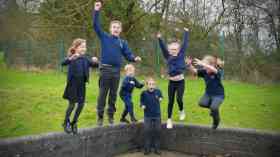In November 2020 I was told I had 6 months left to live and was at risk of sudden death, due to a colloid cyst in my brain.
Supplier Focus
Latest Supplier News
Borg & Overström is a UK manufacturer of premium drinking water solutions. For over 20 years Borg & Overström has developed sustainable, bottle-less, hygienic, drinking water dispensers with the aim to provide exceptional, safe, self-service drinking water into schools, universities, workplaces and communal spaces.

 The keen observers among you will have noted that the most recent Ofsted inspection framework revealed an increased focus on the achievement of pupils with special educational needs and the quality of teaching that enables learning to take place.
The keen observers among you will have noted that the most recent Ofsted inspection framework revealed an increased focus on the achievement of pupils with special educational needs and the quality of teaching that enables learning to take place. 








